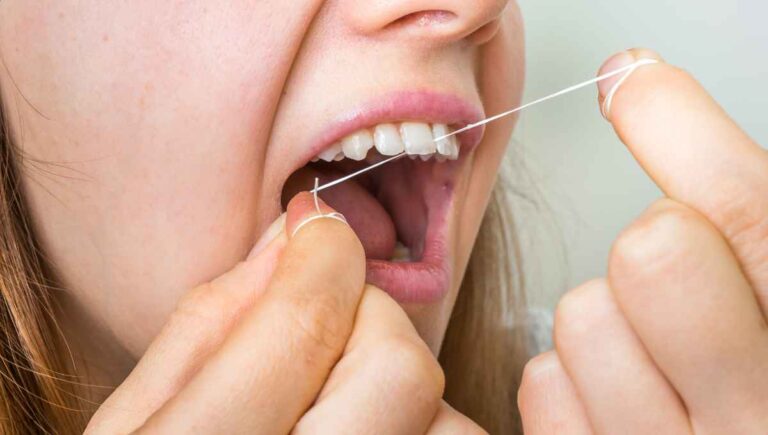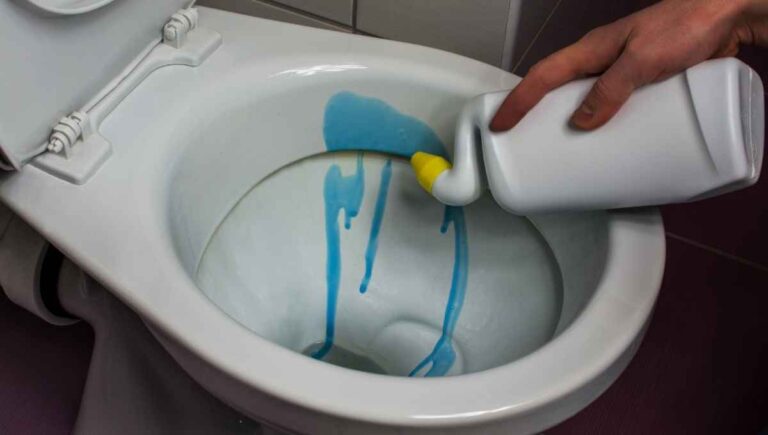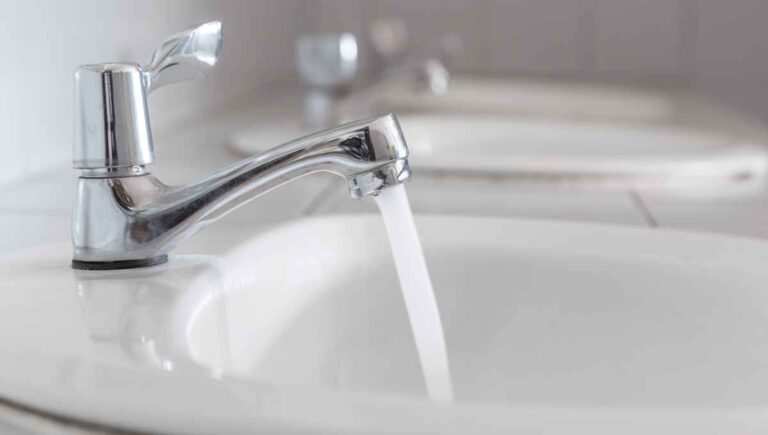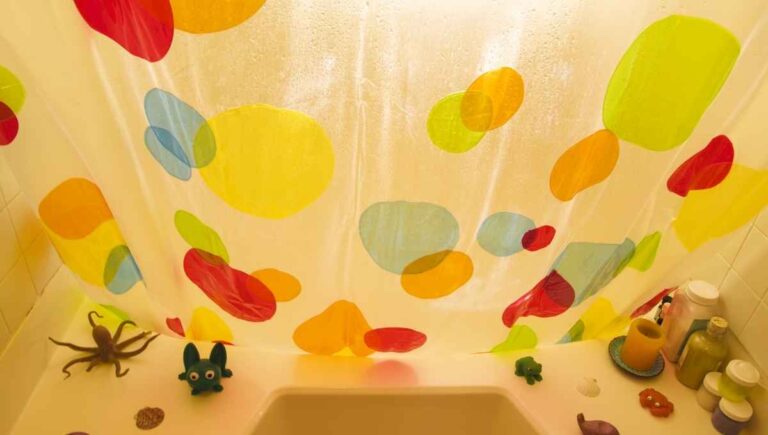Can Toilet Seat Covers Be Flushed? (Here’s What Happens)
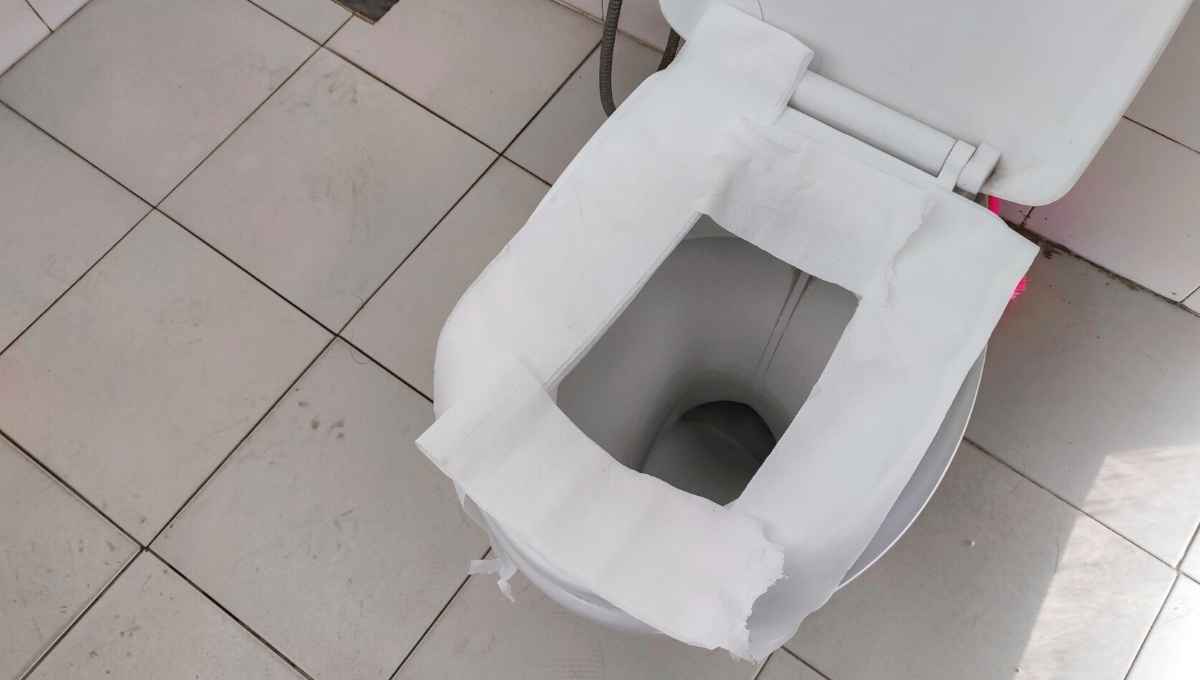
So you decided to add some extra protection in that not-so-clean public washroom by using a toilet seat cover. But, now what? Do you flush the toilet seat cover or throw it away? Thankfully, you’re not alone with this common question.
Disposable toilet seat covers are designed to be flushed. They’re made of a material that will break down once it hits the water, preventing clogs and allowing the user to flush it without worry.
However, sometimes toilet seat covers are designed to be decorative, not functional. So stick with us as we explore deeper into the depths of the toilet seat cover world and see what’s meant to be flushed and what’s not.
This post contains affiliate links. This means Household Blogger may earn a commission should you make a purchase using any of our links. Please refer to our full affiliate disclosure policy for full details.
Here’s a Quick Pro Tip!
Looking to protect your bottom, or just looking to decorate your bathroom?
We’ve found the best options to protect you and your bathroom:
1. Disposable Seat Covers – These single-use, biodegradable covers protect you and easily flush away, breaking up easily when they hit the bowl.
2. Reusable Covers – If you’re trying to be more environmentally conscious, consider using a reusable cover instead of a disposable one!
3. Lid Covers – Spruce up your bathroom with a lid cover. They come in all colors and shapes, so you can find one that fits your decor!
To Flush or Not to Flush
We’ve all had that awkward moment in a public or otherwise unfamiliar bathroom where you’re not positive about what’s decorative and what’s meant for use.
In this section, we’ll discuss what materials should and shouldn’t be flushed.
Can You Flush Disposable Toilet Seat Covers?
The paper toilet seat covers you can commonly find in public use restrooms are designed to be flushed. They’re made of a flexible material that breaks down quickly once in a septic system.
Most toilet seat covers will have instructions on the box stating that the cover can be placed over the toilet seat and then flushed once used.
These are designed so that the user will never have to touch the used seat cover. Convenient and sanitary!
Can You Flush Decorative Toilet Seat Covers?
Decorative toilet seat covers are meant to cover an otherwise unsightly toilet seat, not to be flushed. These will typically be made of cotton or maybe even faux fur and will not break down easily.
Flushing decorative toilet seat covers can lead to big problems. They can block your pipes, preventing drainage from your toilet and causing a backup and overflow.
Not only is this going to cause a mess, but it’ll also be an expensive plumber call!
Thankfully, there are flushable toilet seat cover options! However, not decorative. They are specifically designed to not cause any clogging or drain issues when flushed.
Are You Supposed to Flush a Toilet Seat Cover?
If you’re using a public restroom and they offer disposable toilet seat covers, you are supposed to flush them after a single use. They are designed to break down quickly when exposed to water.
These toilet seat covers are meant to help keep public restrooms clean and sanitary.
Often, there will be a small explanation on how to use the toilet seat covers written directly on the box that contains the covers.
You might also enjoy our post on Why Your Toilet Seat is Always Loose
Will Anything Bad Happen if I Flush a Toilet Seat Cover?
Disposable toilet seat covers are designed to be flushed. Therefore, nothing bad should come of flushing a single toilet seat cover. However, if you flush a bunch of them at once, you can still cause a clog to form.
Disposable toilet seat covers are made to disintegrate quickly upon contact with water.
Still, if you flush a whole container of them at once, they can stick together and form a considerable mess, blocking the system drains and causing a backup.
Types and Purposes of Toilet Seat Covers
There is a startling amount and variety of toilet seat covers, both decorative and functional. We’re going to look a little deeper into a few of these covers and why you should be using them!
What Are the Different Types of Toilet Seat Covers?
You may not realize, but toilet seat covers come in all shapes and sizes, just like toilet seats themselves! Some are more rectangular, some circular, others elongated. So if you’re in the market for a new cover, make sure the shape matches your existing toilet seat!
If you’re demo-ing your house or even just remodeling your bathroom, odds are you’ve been checking out new appliances and accessories for your bathroom.
If you’re considering getting a new toilet seat, it needs a cover, and that cover can add a personal flair to the space!
Do Toilet Seat Covers Do Anything?
While seat covers have been found not to prevent the spread of germs, they do ease people’s minds. Having toilet seat covers available for use in public restrooms prevent most people from feeling the need to ‘hover’ while using the toilet.
People feeling comfortable enough to sit on a public toilet is the most beneficial part of using toilet seat covers.
When people do not feel comfortable enough to sit, they are more likely to aim incorrectly and cause a bigger, germier mess for the next person to use the restroom.
What Is the Purpose of a Toilet Seat Cover?
A toilet seat cover’s purpose is to keep a physical barrier between the toilet and its user. While this barrier doesn’t necessarily prevent germs from spreading, it can help ease your mind.
If you’re concerned about catching germs from a dirty toilet seat, take hope in knowing that you are highly unlikely to catch anything from a dirty toilet seat.
Remember, your best defense against bathroom germs is washing your hands thoroughly after using the facility.
Should I Use a Toilet Seat Cover?
If you will feel safer, and if you would otherwise hover instead of sit, you should definitely be using a toilet seat cover. If you’re just using them because you think it’ll protect you from germs, you can stop.
Unless you’re using multiple layers of covers (which isn’t recommended, as it can clog your toilet), that thin layer isn’t stopping the transmission of anything.
That being said, you’re highly unlikely to actually pick up a virus or STI from a toilet seat.
You might also enjoy our post on How to Fix Cloudy Toilet Water Problems
Are Paper Toilet Seat Covers Effective?
Disposable paper toilet seat covers are not effective in preventing the spread of germs because simply sitting on a toilet seat isn’t spreading germs. More likely, germs are spread from the flushing of the toilet.
The best way to prevent getting any germs from your trip to a public restroom is to wash your hands afterward properly.
This means using warm water, plenty of soap, and scrubbing, then rinsing for at least twenty seconds.
Consider humming the chorus to your favorite song while you scrub. They’re typically between 20-30 seconds!
Are Toilet Seat Covers Pointless?
Toilet seat covers are not pointless. They provide a physical barrier between the user and the toilet. That being said, they aren’t protecting you against germs. They are, however, keeping the bathroom clean and your mind at ease!
Using toilet covers and washing your hand thoroughly after using the bathroom are the two best ways to counter germs.
A disposable toilet seat cover can help keep peace of mind when using a public restroom.
How Are Toilet Seat Covers Supposed to Be Used?
To use a disposable toilet seat cover properly, follow these simple steps. After removing a single cover from the container, place the cover so that the circular section, so the flap falls into the front of the bowl and the ring covers the entire toilet seat.
Once you flush the toilet, the flap at the front of the bowl should pull the entire cover into the bowl, making it unnecessary for you to touch the used cover.
Convenient and sanitary! You can also use a second cover to cover the toilet lid, if necessary.
What’s the Proper Way to Use a Toilet Seat Cover?
The proper way to align a toilet seat cover is to use the interior flap at the front of the bowl, not at the back. While this may seem strange, it allows the flap to catch on the water released when the toilet flushes.
This allows the flap to get washed away with the flush, meaning you don’t have to touch the used toilet seat cover manually.
This keeps you from touching a dirty toilet seat. As always, still, be sure to wash your hands thoroughly after using the facilities!
You might also enjoy our post on What to do If Your Toilet Seat Won’t Stay Up
Does the Toilet Seat Cover Flap Go In the Front or the Back?
The flap of a toilet seat cover goes in the front. This allows the flap to catch on the bowl of the toilet and be flushed automatically, without the need for someone to touch it once it’s been used.
Additionally, having the flap of a toilet seat cover in the front of the bowl can prevent unsightly and uncomfortable splatter from occurring.
Using a cover can keep everybody clean and happy!
Are Toilet Seat Covers Sanitary?
If you notice a wet spot on a toilet seat, you want to dry it with toilet paper before placing your toilet seat cover on it. This keeps the cover clean and sanitary.
Toilet seat covers can help prevent you from accidentally picking up germs, though germ transmission is unlikely, even without a cover.
You can flush a disposable toilet seat cover after use, and as long as you’ve placed the cover correctly, you should not need to touch it to flush it.
This is the most sanitary way to complete your next bathroom ritual.
Toilet Seat Covers and Your Septic System
Now that we’ve gone over the best way to use toilet seat covers let’s talk a bit more about the impact of a disposable cover on your septic system and the environment. What you learn may surprise you!
Are Toilet Seat Covers Bad for the Environment?
If you are concerned about using toilet seat covers because of their impact on the environment, you may be on to something. Toilet seat covers may be linked to an abundance of sewer backup when not used correctly.
Also, because these liners are most commonly made from trees, there is the impact of deforestation to consider. If in doubt, consider using a biodegradable toilet seat cover instead of plastic!
Are Toilet Seat Covers Septic Safe?
Single-use disposable toilet seat covers are designed to be flushed after use. They are made of materials that break down quickly and should not harm a septic system. Be sure you’re only flushing one at a time to avoid build-up.
If you have an old or outdated septic system, be sure that your disposable toilet seat covers are biodegradable and septic safe.
Buying a septic-safe cover ensures that the cover will break down easily and avoid a costly septic bill.
What Are Disposable Toilet Seat Covers Made Of?
Most disposable toilet seat covers are made from a biodegradable form of plastic or paper. Be sure to check what your covers are made from before you buy. Stay away from plastics. Instead, focus on finding a paper-based cover.
Paper-based covers break down easier in the septic system and can prevent sewage build-up. Paper also breaks down a lot quicker than plastic, even if it’s disposable grade. Paper is better for the environment, especially if it’s recycled.
What Is a Toilet Seat Cover Made Of?
A disposable toilet seat cover is typically made of plastic, paper, or vinyl, depending on the manufacturer. You can also find environmentally friendly brands that use recycled materials.
You can also find other non-disposable covers. These can be plastic, faux fur, wood, or even porcelain.
Consider grabbing yourself a re-usable, machine washable toilet seat cover for peace of mind and helping the environment at the same time!
Related Questions
Why Should You Put the Toilet Seat Down Before Flushing?
You should always be putting the toilet seat down before flushing. Did you know that microscopic matter from your toilet can spray up to six feet? You can get more germs on you from flushing than you do from sitting on the seat in the first place!
The easiest way to prevent this spray is to close the lid of the toilet before flushing. This blocks the spray from coating the surfaces of your bathroom.
If you are in a public restroom with no lid, stand as far back as you can to prevent the spray, and be sure to wash your hands thoroughly.
Should You Leave the Toilet Seat Up or Down?
Whether you leave the toilet seat up or down has been a discussion in every home at one point. Battle of the sexes aside, there are plenty of good reasons to argue to keep the seat down.
Reason one, keeping the lid down while flushing, prevents a spray of germs and other matter from landing on your bathroom surfaces.
Also, having your toilet seat down at all times can prevent other incidents. It can prevent objects from accidentally being dropped into the toilet.
It can also prevent curious kids and pets from playing in the water.
What Shouldn’t You Throw in the Toilet?
A general rule of thumb is that the only thing that should go in the toilet is human waste and toilet tissue/disposable toilet seat covers. No cotton products should ever be disposed of by flushing.
While Grandma may swear by throwing away food waste by flushing it down the toilet, this method can cause a backup, especially if there is a lot of grease or fat involved.
You should also avoid flushing other paper materials like tissues or paper towels, as they are not designed to break down as efficiently as toilet tissue.
Final Thoughts
If you choose to utilize a disposable toilet seat cover during your next trip to a public restroom, remember they are single-use and flushable.
If you can, try to use a recycled cover. Additionally, remember it works best only to flush one at a time.
We hope this information gives you peace of mind next time you find yourself in a public restroom.
Meta: Ever wondered if it makes sense to use a disposable toilet seat cover? Wonder if they’re flushable? We’ve done the research, so you don’t have to!









